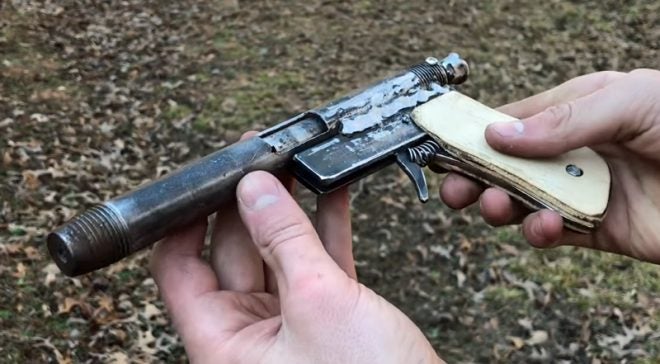
Draw the rifling hook cutter box through the bore while rotating the barrel at a rate recommended by the expert to give the desired rifling spin. Insert a tube mounted with the rifling hook cutter box down the bore of the barrel. Find these experts at specialty gun barrel making shops. Consult with experts in the field of gun barrel making to determine this information. Determine the number of rifling grooves to be placed in the bore and the amount of twist to be put on the rifling grooves.

This spin will gyro stabilize the flight of the fired round. Rifling consists of spiral grooves in the bore, which will impart a spin to the fired round as it travels down the barrel. Stainless steel barrels have have a longer service life and are result in a more accurate firearm than do chrome moly steel barrels. Stainless steel is more expensive than chrome moly Steel. It also is easier to chemically blacken, if desired, to give a traditional look to the barrel. Chrome moly steel is the least expensive alternative. Specify that the steel must be stress relieved at the steel mill. Ask for a quality certification on the steel. X Research source Obtain 1.25 inch (31.75 mm) rods from a specialty steel mill.


The steel should have a hardness of 25 to 32 on the Rockwell scale so that the steel is strong enough to contain the pressure necessary to propel the round through the barrel, but not so brittle that it will be harmed by the machining operations to be performed. The steel chosen must have a strength of 100,000 psi (689476 kPA) to withstand the force of the gasses that propel the round. Choose the type of steel to be used for the gun barrel.


 0 kommentar(er)
0 kommentar(er)
